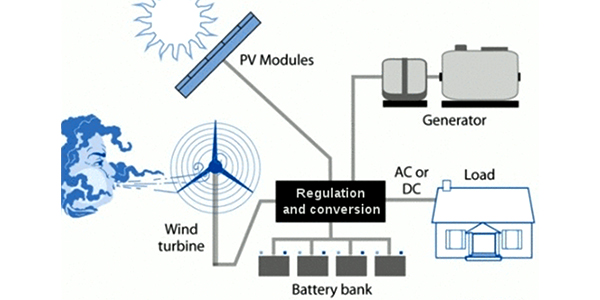NYISO on Thursday kicked off an effort to create a market participation model that would allow an energy storage resource (ESR) and one or more generators to be located at a single point of interconnection, share the same point identifier (PTID) and act as a single resource.
The project is slated for completion by year-end.
Market rules that the ISO filed with NYISO OKs Changes on Hybrid, Fast Start Resources, TCCs.)
“The HSR participation model will only apply to aggregations located at a single physical location and may not allow for swapping aggregations,” said Christina Duong, market design specialist for distributed resource integration, who presented the initiative at the Installed Capacity/Market Issues Working Group. “The DER model only allows resources up to 20-MW injection capability, but the HSR model will accommodate resources of all sizes.”
The distributed energy resources participation model provides market rules for DERs to participate in NYISO’s energy, ancillary services and ICAP markets. The ISO’s market design is complete, with the FERC Order 2222 filing due in July. The DER model permits aggregation of resources across multiple locations, and an individual resource may leave or join aggregations at the start of a calendar month.
State initiatives such as renewable energy credit procurements incent developers to couple storage with intermittent renewable assets, which benefits the grid by reducing the output volatility and improving the availability of intermittent resources.
NYISO believes a new HSR market participation model will improve grid flexibility and resilience by enabling new resource types to provide their full capabilities, Duong said.
Evolving Grid Services
One stakeholder asked if the ISO is trying to build off the three existing participation models, or do something new.
“We do want to make this a different model rather than just expanding and making ESR 2.0 or CSR 2.0, so this is going to be a separate and distinct model,” Duong said.
Another stakeholder asked about combining two distinct resources into one PTID, and whether the ISO will be able to discern performance of the individual resources, for example a solar farm and a battery.
“That brings up some concerns we have been having internally during preliminary discussions of how much do we need to know and how much telemetry do we need in order to see for each of the components within this aggregated model, so those are steps and concerns that we’re trying to walk through,” Duong said.
Speaking about a related study on grid services from renewable generators, Michael DeSocio, NYISO senior manager of market design, said that in the immediate future, “maybe we can offer up ways that these resources can provide existing services [operating reserves, regulation, voltage support service and black start service], and as we develop new services, this will inform how these resources could provide those services.”
The ISO focuses on the attributes necessary to provide the service, and any resource capable of meeting those attributes is eligible to provide the service, DeSocio said.
“We’re focused here on discussing what are the capabilities that renewables can provide with regard to their ability to curtail their output or maybe be willing to spill energy so they can provide services and determine whether that capability can be used to meet the attributes we require for the market,” DeSocio said. “And all of this is built around reliability, keeping the lights on for New Yorkers.”



